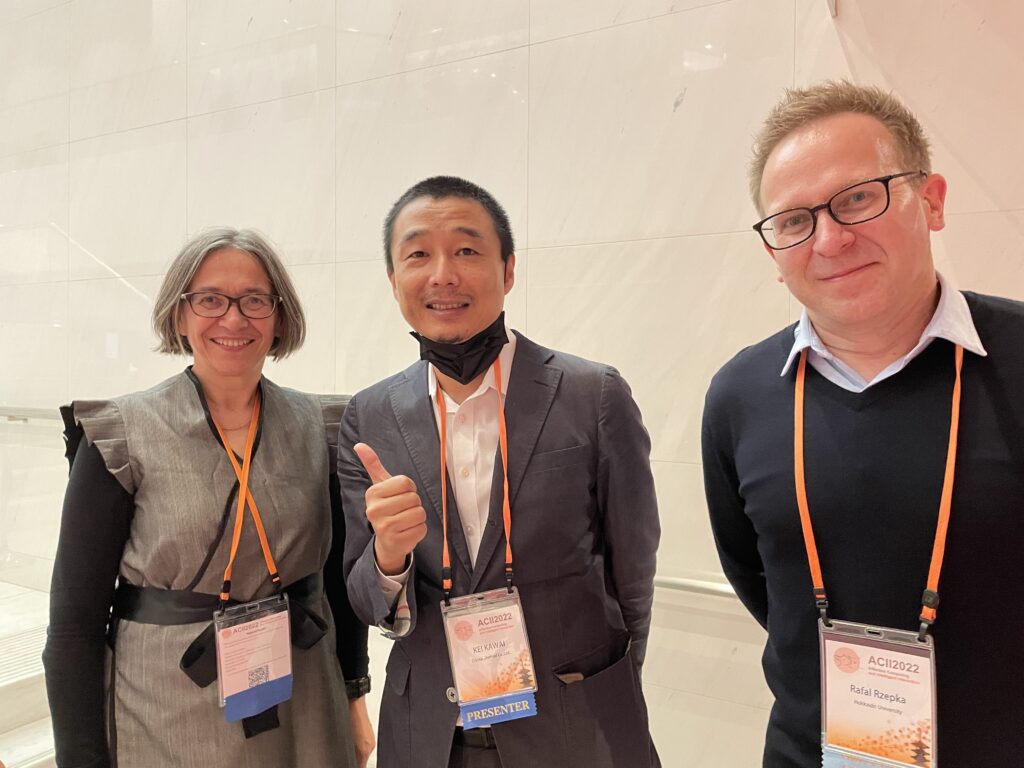blog
AIブログ
クリスタルメソッドの研究成果がIEEEにて査読付き論文として掲載されました
【研究紹介】対話システムの“聞き分け力”を向上!
疑問文を見抜くAIをCNNで実現しました
日々進化を続ける対話システム。
私たちの研究チームでは、「ユーザーの発話が疑問文かどうかを自動で判断する技術」に取り組みました。
その成果が、IEEEにて査読付き論文として採択・公開されました!
論文タイトル
Using Convolutional Neural Network for Improving Inference of Interrogative Sentences in a Dialogue System
(対話システムにおける疑問文の推定精度向上にCNNを活用)
はじめに:なぜ「疑問文の識別」が大事なの?
対話システム(例:音声アシスタントやチャットボット)は、ユーザーの発話に的確に応答する能力が求められます。
中でも「これは質問なのか、ただの発言なのか」を正しく理解することは、自然な会話のやりとりにおいて非常に重要です。
例えば、
- 「明日の天気は?」という疑問文に対して、適切な天気情報を返す
- 「明日は晴れだね」という平叙文には、相槌や共感を返す
このように、発話の「文の種類」を正しく推定することで、対話の質が飛躍的に向上します。
そこで私たちは、この疑問文 vs 平叙文の自動識別タスクに着目し、機械学習による高精度な推定手法の開発を行いました。
研究の目的とアプローチ
本研究の目的は、
「ユーザー発話が疑問文かどうかを自動的に判断するモデルを構築し、既存手法よりも精度を向上させること」
です。
そこで私たちは、CNN(Convolutional Neural Network) を用いた新しい手法を提案しました。
このモデルでは、以下の2つの異なる情報を統合的に活用しています。
- 音声のピッチ情報(声の高さ)
- ローマ字に変換された日本語文(テキスト情報)
人間も「語尾の音の上がり下がり」で疑問文を判断するように、モデルにもこの声の特徴を学習させることで、従来よりも正確な判定が可能になります。
技術的な特徴と工夫
提案手法には、以下のような特徴的な要素があります:
CNNの活用
CNNは画像認識だけでなく、テキストや音声の「局所的なパターン」を捉えるのにも有効です。
本研究では、音声のピッチとローマ字文の時系列的特徴をCNNで処理することで、高精度な文識別を実現しました。
マルチモーダルな入力
単一の情報に頼らず、音と文字という異なるモダリティを組み合わせることで、より安定した推定が可能になりました。
形式変換の工夫
日本語の文をローマ字表記に変換することで、音声と文字列をより密接に対応させ、モデルに一貫性のある学習を促しました。。
今後の展望と応用可能性
今回の成果は、日本語に特化した対話システムだけでなく、以下のような幅広い分野への応用が期待できます:
- 他言語(英語・韓国語など)への展開
- スマートスピーカーやロボットへの組み込み
- コールセンターでの発話意図分析
- 医療や福祉分野での会話支援システム など
さらに将来的には、画像やジェスチャーなどのマルチモーダル情報とも統合して、より人間らしい会話AIの実現を目指していま
論文情報
- 論文タイトル:Using Convolutional Neural Network for Improving Inference of Interrogative Sentences in a Dialogue System
- 掲載先:IEEE Xplore
- 論文URL:https://ieeexplore.ieee.org/document/10086010
ACII2022国際講演会での発表
2022年10月18日-21日に開催されたAffective computing and intelligence interaction(ACII2022)
感情コンピューティングや、マルチモーダル学習における人間と機械の交流に関する国際会議
先の論文発表を受けて、国際人工知能学会ACII2022にて講演を行いました。


奈良の様子もお届け♪
Study about AI
AIについて学ぶ
-

AI依存時代に問われる―便利さの裏側で豊かさの実感はどこにある?
「AIエージェントって、結局便利なのは企業だけでしょ?」そんな声が聞こえてきそうだけど、現実はもっと複雑だ。今やAIは、単なるアプリやチャットボットの枠を超えて...
-

なぜ私たちは「古い心」で生きるのか?進化心理学で読み解く現代社会を生きづらい理由
あなたの心は「原始時代のOS」で動いている? スマートフォンを買い替えるたびに、OSを最新バージョンにアップデートしますよね。古いOSのままでは、最新のアプリが...
-

ディープフェイク=怖いだけじゃない?実は“必要とされる理由”と未来の可能性
ディープフェイク=怖いだけじゃない?実は“必要とされる理由”と未来の可能性 ディープフェイク技術。名前を聞くと、どこか怖いイメージを持っている人も多いのではない...
